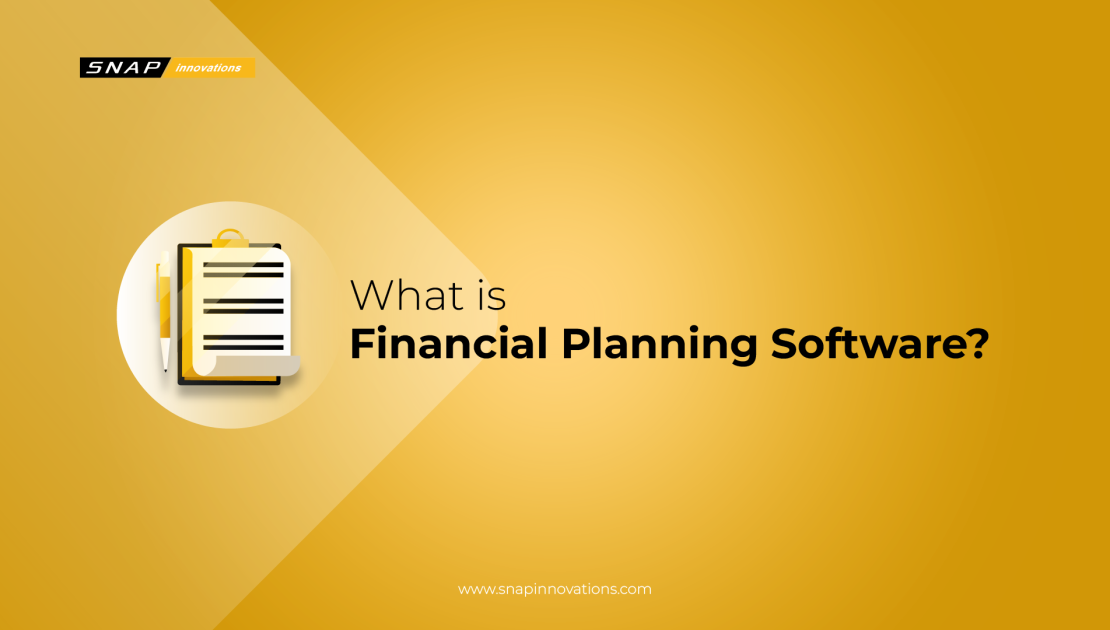In a world where numbers tell the story, financial planning software has become the novelist, weaving intricate tales of financial health, strategies, and forecasts. Our evolving relationship with technology has emboldened industries, and the financial sector is no exception. With the integration of sophisticated financial planning software, professionals and individuals are empowered to make more informed and strategic decisions regarding their wealth and investments.
The landscape of wealth management is transformed by these dynamic tools that allow for an array of functions from budgeting, investment analysis, to comprehensive financial planning. These solutions facilitate a more systematic and organized approach to managing finances, ensuring that users can navigate the complexities of their financial landscape with ease and precision. Embracing the power of financial planning software not only streamlines processes but also unveils opportunities and strategies that might have otherwise remained obscured.
In the fabric of financial strategies, this software threads innovation, automation, and accuracy, enabling a tapestry of financial insights and strategic planning capabilities. Our journey in this article will explore the depths of financial planning software, unveiling its functions, significance, and influence on personal and professional financial management realms.
What is Financial Planning Software?
 Financial planning software is a robust tool, a technologically, designed to manage, analyze, and plan various financial aspects meticulously. It’s like having a financial advisor living inside your computer or smartphone, always ready to provide you with insights, analyses, and guidance. Businesses, financial advisors, and individuals use these programs for a multitude of functions, such as budgeting, forecasting, investment planning, and retirement planning.
Financial planning software is a robust tool, a technologically, designed to manage, analyze, and plan various financial aspects meticulously. It’s like having a financial advisor living inside your computer or smartphone, always ready to provide you with insights, analyses, and guidance. Businesses, financial advisors, and individuals use these programs for a multitude of functions, such as budgeting, forecasting, investment planning, and retirement planning.
They come equipped with features that allow for the customization and automation of financial reports, helping to track income, expenses, and investment performance. The versatility of financial planning software lies in its ability to adapt to different financial goals and requirements, providing a tailored approach to financial management strategies.
An important aspect of this software is its user-friendly nature, inviting users from varying levels of financial expertise to engage with its features. It encourages a more hands-on approach to managing one’s finances, promoting financial literacy and awareness through its interactive and intuitive platforms.
Read More: Day Trade vs. Swing Trade: Navigating the Trading Styles
The Significance of Real-time Data
 In the digital age, real-time data has become the cornerstone of effective decision-making. Financial planning software excels in this department, offering users continuous updates and access to their financial data. This ensures that decisions are made based on the most accurate and current information, enhancing the reliability and effectiveness of financial strategies.
In the digital age, real-time data has become the cornerstone of effective decision-making. Financial planning software excels in this department, offering users continuous updates and access to their financial data. This ensures that decisions are made based on the most accurate and current information, enhancing the reliability and effectiveness of financial strategies.
Having access to real-time data also means being able to respond more agilely to market changes. In the dynamic and often unpredictable world of finance, having the ability to quickly adjust strategies and allocations is crucial. Financial planning software facilitates this agility, enabling users to pivot their financial plans as necessary based on the latest data.
The immediacy of this data also enhances transparency. Users can have a clear and updated view of their financial status, performance, and projections at all times. This allows for more informed decision-making, helping users feel more confident and secure in their financial strategies and choices.
Furthermore, it aids in monitoring and analyzing performance against set goals and benchmarks. It allows for timely adjustments and ensures that financial strategies remain aligned with objectives and market realities.
Customization and User Experience
 Financial planning software offers a personalized touch. It allows users to customize their experience, aligning the tools and features with their specific needs and objectives.
Financial planning software offers a personalized touch. It allows users to customize their experience, aligning the tools and features with their specific needs and objectives.
1. Personalization in Customization
Diving into the realm of financial planning software, customization emerges as a beacon of personalization. The ability to tailor the software according to specific needs and objectives propels its usability, making it a potent tool in crafting unique financial pathways. Imagine having a software that doesn’t just work with generic strategies but aligns itself intricately with your specific financial goals and visions.
Customization breathes a sense of ownership into the user experience. It allows you to define the contours of your financial landscape, plotting out pathways that resonate with your objectives and strategies. This not only enriches the user experience but also fosters a deeper engagement with the software, enabling users to navigate their financial journeys with greater precision and relevance.
2. Enhancing Utility and Effectiveness
The symphony of customization plays harmoniously with the user experience, enhancing the software’s overall utility and effectiveness. It transforms the software into a more responsive and adaptive tool, calibrated finely to resonate with the user’s financial tempo. Such tailored experiences promote a more nuanced and focused interaction with financial data and strategies, ensuring that the software serves as a true extension of the user’s financial thought process.
This is where the software truly shines, adapting its features and functionalities to mirror the unique requirements and preferences of each user. Such adaptability ensures that the software isn’t just a generic platform but a dynamic tool that evolves and aligns with the user’s financial planning trajectory, enhancing its overall utility and effectiveness in the process.
3. Cultivating a Diverse Ecosystem
Customization fosters diversity within the software’s ecosystem. By allowing tailored experiences, the software becomes a hospitable environment for a multitude of users ranging from individuals and financial advisors to large businesses. Each user, with their unique financial landscapes, finds the software adaptable to their specific needs and strategies.
This diversity not only magnifies the software’s applicability but also enriches its functional ecosystem, making it a versatile asset in various financial planning scenarios. It transcends rigid functionalities, blossoming into a software that is as diverse, dynamic, and adaptable as the multitude of users it serves, confirming its place as an indispensable tool in the financial planning arena.
4. Crafting Detailed Financial Narratives
The art of customization allows the software to craft detailed and personalized financial narratives. Users can choreograph an array of financial variables, crafting reports and analyses that resonate with their specific objectives and strategies. This ability to sculpt finely tuned financial narratives enhances the software’s precision and relevance, enabling users to glean insights that are meticulously aligned with their goals.
Such a detailed approach elevates the strategic dimension of financial planning. It allows for a more profound exploration of financial scenarios, fostering a more comprehensive and insightful planning process. It ensures that the software not only provides data but tells a story that is intricately woven with the user’s financial aspirations and strategies.
Security and Reliability
In the realm of financial management, security is paramount. Financial planning software is fortified with robust security features ensuring that sensitive data is safeguarded against unauthorized access and cyber threats. The peace of mind that comes with enhanced security provisions allows users to engage with the software with confidence.
Reliability is another cornerstone of financial planning software. Users can trust the software to provide accurate, timely, and consistent data and insights. This trust fosters a more conducive environment for effective financial planning and decision-making.
Enhanced security and reliability also bolster the software’s credibility. It becomes a trustworthy ally in navigating the multifaceted landscape of financial management and planning, ensuring that users can rely on its guidance and insights.
The emphasis on security and reliability reflects the software’s commitment to providing a user-centric experience. It underscores the importance of user confidence and trust in leveraging the software’s capabilities to enhance financial planning strategies.
Collaboration and Accessibility
Collaboration is woven into the functionalities of financial planning software. It facilitates seamless interactions between advisors and clients or among team members, enabling a more cohesive and coordinated approach to financial planning.
The software’s cloud-based nature often means that it is accessible from anywhere, providing users with the flexibility to engage with their financial data whenever necessary. This accessibility enhances the software’s usability, ensuring that it can be a constant companion in one’s financial journey.
Moreover, the collaborative features of the software enable a sharing of insights and information, fostering a more inclusive and comprehensive approach to financial strategy development. It encourages a culture of shared knowledge and insights, enhancing the collective financial acumen and decision-making capabilities.
By fostering collaboration and accessibility, the software encourages a more integrated and holistic approach to financial planning. It ensures that various perspectives and insights are considered, enhancing the depth and breadth of financial strategies and decisions.
The Future of Financial Planning
The evolution of financial planning software signifies a paradigm shift in the financial planning landscape. It heralds a future where technology and human insights merge to create nuanced and sophisticated financial strategies.
Automation and artificial intelligence are set to play a more central role, enhancing the software’s capability to analyze trends, make predictions, and offer insights. This will further streamline the financial planning process, ensuring that users have access to a wealth of information and insights to guide their decisions.
Moreover, the ongoing advancements in technology promise a future where financial planning software becomes an even more integral and indispensable tool in wealth management. It is poised to become a constant ally, evolving in response to changing market dynamics and user needs.
Choosing the Right Software
Choosing the right financial planning software involves considering various factors such as features, user experience, security, and customization options. It’s important to select a tool that aligns with your specific needs and objectives, ensuring that it can be a valuable asset in your financial planning journey.
1. Features and User Experience
When diving into the pool of financial planning software, the features offered should be your buoy. Different software comes packed with a variety of features like budgeting, investment analysis, forecasting, and more. Align these features with your specific needs; whether you are an individual planning for retirement, a business strategizing investments, or a professional advisor managing multiple portfolios, the software should cater to your particular requirements.
The user experience is the water in which you swim; it should be comfortable and suitable for you to navigate easily. A user-friendly interface, clear navigation, and logical layout enhance the user experience. The software should make the process of financial planning smoother and not add layers of complexity. Opt for software that is intuitive and doesn’t require an extensive learning curve to ensure that it is easy to use and understand.
2. Security and Customization Options
In a world where data breaches are not uncommon, security is a fortress. The financial planning software you choose should be armored with robust security protocols to safeguard sensitive financial data. Encryption, secure user authentication, and regular security updates are essential features that help ensure your financial data is well-protected from potential threats and vulnerabilities.
Customization is the software’s ability to adapt to your unique battle strategies. It should allow you to tailor features, reports, and analyses based on your specific financial planning needs. Customization enhances the relevance of the software, ensuring that it provides data and insights that are most pertinent to your financial objectives and strategies.
3. Adaptability and Integration
Software adaptability is like the changing tactics in a battle. It should be flexible enough to evolve with changing financial goals, market trends, and user needs. The software should not be rigid but should allow for modifications and adjustments to align with your current financial strategies and objectives.
Integration is the alliance of your software with other existing systems and workflows. It should seamlessly blend with other tools and platforms you use, facilitating a smooth and coordinated approach to financial planning and management. The ability to integrate efficiently ensures that the software augments your current processes, enhancing overall productivity and efficiency.
4. Research, Reviews, and Recommendations
Knowledge is power in selecting the right financial planning software. Engage in thorough research, exploring different software options, their features, capabilities, and user reviews. User reviews offer valuable insights into the actual performance and reliability of the software, helping you make a more informed decision.
Recommendations from industry peers, professional networks, and experts can also guide your choice. Professional advice and recommendations provide a knowledgeable perspective, aiding in the selection of software that aligns with industry best practices and professional standards. Equip yourself with this arsenal of information and insights to make a choice that best suits your financial planning journey.
Read Next: Fund Management Software: Enhancing Investment Efficiency
Conclusion
In the world where technology reigns supreme, financial planning software stands as a pillar of innovation and efficiency in wealth management. It encapsulates a realm of functionalities, from real-time data, customization, enhanced security, to collaborative features, making it a powerhouse of financial planning and analysis.
As we navigate the future, the software promises a continual evolution of features and capabilities, aligning with the ever-changing financial landscape. By embracing the technology, users are empowered with a tool that enhances decision-making, strategy development, and overall financial management, weaving a tale of financial success and stability.

